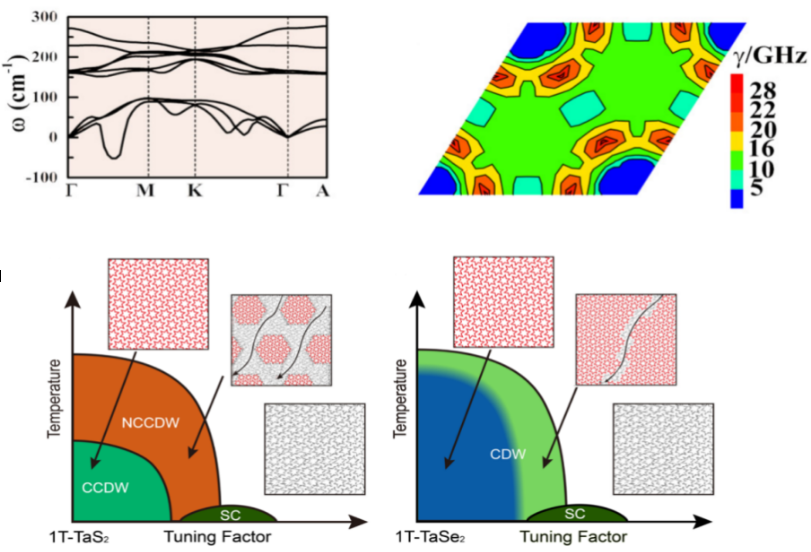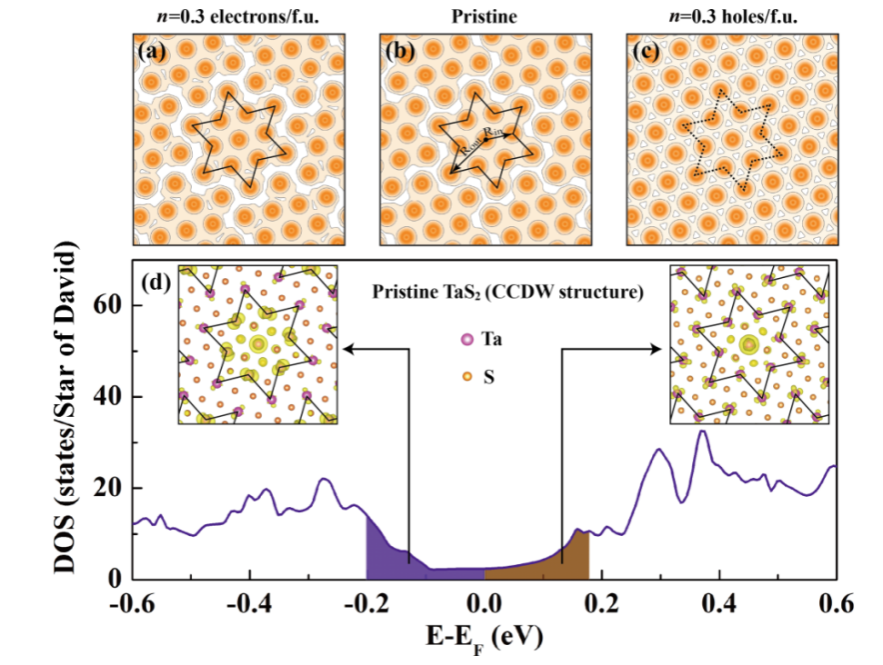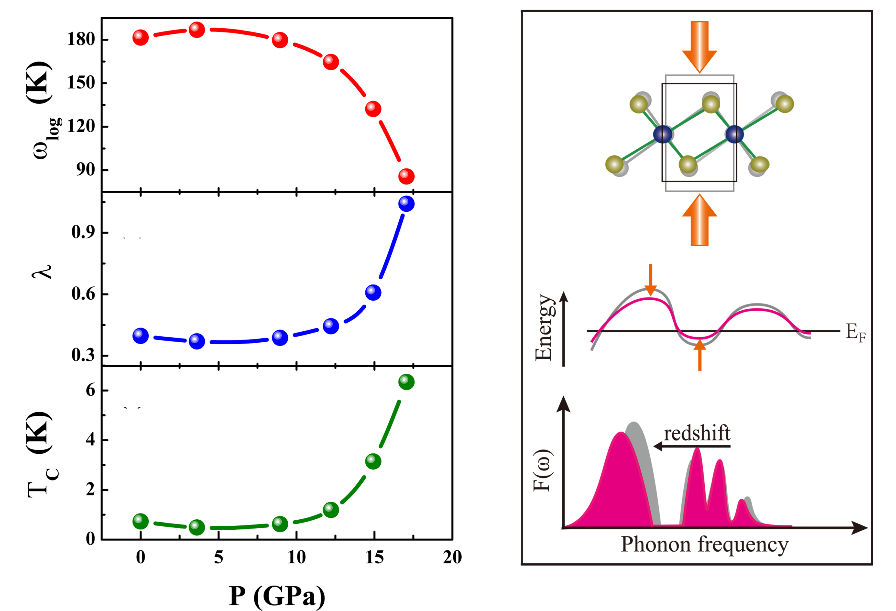
Recently, through first-principles calculations and experiments, the research group led by Prof. SUN Yuping and Prof. LU Wenjian in the Functional Materials Laboratory at Institute of Solid State Physics, Hefei Institutes of Physical Science made a series of achievements in manipulation of superconductivity and charge-density-wave (CDW) order in transition metal dichalcogenides (TMDs) by high pressure and charge-carries doping.
Transition metal dichalcogenides MX2, where M is a transition metal (e.g. M = Ti, Mo, Ta, W) and X is a chalcogen atom (S, Se, Te), emerges as a family of layered materials.
The intra-layer is composed of an X–M–X sandwich structure, which is attracted by the van der Waals forces between the inter-layers. TMDs exhibit a rich set of CDW orders, which usually coexist and/or compete with superconductivity. The mechanisms of CDWs and superconductivity in TMDs are still under debate.
Furthermore, the manipulation of the CDW and superconductivity in TMDCs by high pressure and charge-carries doping need to be further investigated.

Figure 1. Phonon spectrum (upper left) of 1T-TaSe2 and the corresponding phonon linewidth (upper right). Schematic tuning phase diagrams of 1T-TaS2 (lower left) and 1T-TaSe2 (lower right). (Image by SHAO Dingfu)
To tackle this problem, the research team chose three repressive materials: 1T-TaSe2, 1T-TaS2 and 1T-TiTe2 to seek for the answers.
At the very first, they performed an investigation on the typical TMD system, 1T-TaSe2-xTex (0≤x≤2) by experiments and first-principles calculations.
Doping-induced disordered distribution of Se/Te suppresses CDWs in 1T-TaSe2. A domelike superconducting phase with the maximum TC onset of 2.5 K was observed near CDW. The observations can be understood based on the strong electron-phonon coupling induced periodic-lattice-distortion (PLD) mechanism of CDW.
The results make fundamental understanding about CDWs and related superconductivity in TMDs and are detailed in Physical Review B entitled Nature of charge density waves and superconductivity in 1T-TaSe2-xTex .
Actually, recent investigations suggested that using light or an electric field could manipulate the commensurate CDW ground state. Such manipulations are considered to be determined by charge-carrier doping.

Figure 2. Doping effects in the bulk TaS2 investigated using the low-symmetry CCDW structure. (Image by SHAO Dingfu)
Considering this, the team then used first-principles calculations to simulate the effects of charge-carrier doping on the CDW in 1T-TaS2.
This time, they found that both in bulk and monolayer 1T-TaS2, the CDW is stable upon electron doping, while hole doping can significantly suppress the CDW, implying different mechanisms of two kinds of manipulations.
Moreover, they also estimated that the hole doping can introduce potential superconductivity with the superconductivity transition temperature of 6-7 K. Controllable switching of different states such as a CDW/Mott insulating state, a metallic state, and even a superconducting state can be realized in 1T-TaS2.
As a result, this material may have very promising applications in future electronic devices. Their findings this time were published in Physical Review B entitled Manipulating charge density waves in 1T-TaS2 by charge-carrier doping: A first-principles investigation.
In addition, though 1T-TiTe2 is a simple physical system, abundant physical phenomena can be realized via various kinds of manipulation. However, the superconductivity has not been experimentally found down to 1.1 K at ambient pressure.

Figure 3. ωlog (logarithmically averaged characteristic phonon frequency), electron-phonon coupling constant and superconductivity transition temperature TC of 1T-TiTe2 under the uniaxial pressure (left). Illustration of the effect of uniaxial pressure on the physical properties of 1T-TiTe2 (right). (Image by XIAO Ruichun)
To aim at this, the team studied the superconductivity of 1T-TiTe2 under high pressure.
The results indicate that the hydrostatic pressure is harmful to the superconductivity, while the uniaxial pressure along the c axis is beneficial to the superconductivity. TC increases dramatically from 0.73 K at ambient pressure to 6.34 K under the uniaxial pressure of 17 GPa.
Furthermore, previous research predicts that 1T-TiTe2 undergo a serial of topological phase transitions under the uniaxial pressure. Thus, 1T-TiTe2 is considered as a possible candidate in TMDs to explore topological superconductivity. This work was published in the Journal of Materials Chemistry C entitled Manipulating superconductivity of 1T-TiTe2 by high pressure.
Parts of the above works were cooperated with High Magnetic Field Laboratory and Institute of Physics of Chinese Academy of Sciences. The research works were financed by National Key Research and Development Program and National Natural Science Foundation of China.

86-10-68597521 (day)
86-10-68597289 (night)

86-10-68511095 (day)
86-10-68512458 (night)

cas_en@cas.cn

52 Sanlihe Rd., Xicheng District,
Beijing, China (100864)

